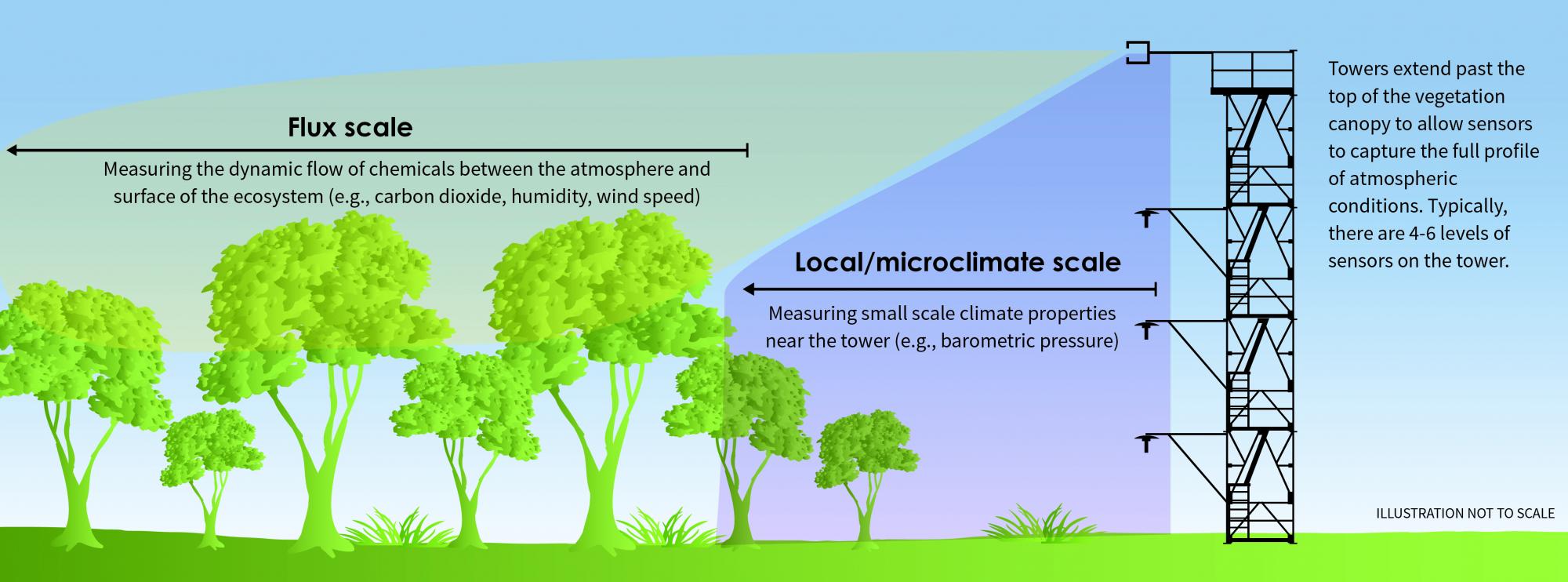National Ecological Observatory Network (NEON) is a large collaborative group of long-term ecological research sites spread over 81 locations in the United States including Harvard Forest and Smithsonian Ecological Research Center (SERC).
This video is a part of the educational portfolio by NEON showing how researchers measure photosynthesis at single leaf level using infra red gas analyzers. Understanding photosynthesis at leaf level enables scaling up and extrapolate photosynthesis at forest level. Infact, there are computer models that treat forest canopies as if they are a one giant single leaf. These are called “big Leaf” models.
All NEON sites contain a tower that is laden with scientific instruments. Measurement of CO2 is one of the most crucial for understanding photosynthesis at the canopy level.
Tower measurements are combined with aerial campaigns with aircraft carrying LiDAR and hyperspectral imaging cameras. The NEON airborne observation platform (AOP) makes reqular flights over the sites. NEON measurements are pivotal in accurate calculation of photosynthetic carbon budget in terrestrial ecosystems.
We know that more than half of the biological carbon uptake takes place in the oceans through microbial photosynthesis. We also want to know what kinds of ecological changes may happen in the future since atmospheric carbon dioxide levels are increasing alarmingly. How will this affect photosynthesis and change plant growth? There are quite a few experimental field sites around the world trying to assess the impact of higher carbon dioxide levels on plant communities in their natural setting including an intact microbial community. Free-Air Carbon dioxide Enrichment (FACE) experiments enables understanding of natural plant behavior while these plants are competing with others for resources. For example one FACE experiment seeks to understand how a sweet gum forest responds to carbon dioxide enrichment through an investigation conducted by researchers in Oak Ridge National Laboratories.
Climate models used by the Intergovernmental Panel on Climate Change IPCC estimate global temperature and precipitation patterns will change throughout the 21st century because of rising greenhouse gas concentrations. Since the industrial revolution the atmospheric carbon dioxide concentration has risen by 35%. In fact, it is higher now than at any time in the past 25 million years. The IPCC is predicting an additional 50% increase by 2050.
By creating a continuous recording of present day conditions the NEON is creating a detailed climatic archive. By taking this record into account we can recognize trends and predict future ecosystem responses to human induced changes such as increased carbon dioxide levels or tropospheric ozone.



0 Comments
You can be the first one to leave a comment.